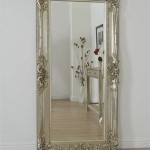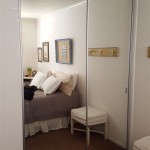DIY LED Lights Bathroom Mirror: A Comprehensive Guide
Illuminating a bathroom mirror effectively is crucial for various tasks, from applying makeup and shaving to simply checking one's appearance. Traditional bathroom lighting often casts unflattering shadows or provides inadequate brightness. An increasingly popular solution is integrating LED lights directly into or around the mirror. This article provides a detailed guide on creating a DIY LED lights bathroom mirror, covering necessary materials, step-by-step instructions, and important safety considerations.
Key Point 1: Understanding the Benefits of LED Lighting for Bathroom Mirrors
LED lighting offers several advantages over traditional incandescent or fluorescent options, making it ideal for bathroom mirror applications. One primary benefit is energy efficiency. LEDs consume significantly less power than traditional bulbs, resulting in lower electricity bills and reduced environmental impact. This efficiency translates to long-term cost savings, making the initial investment worthwhile.
Secondly, LEDs boast a significantly longer lifespan. Unlike incandescent bulbs that burn out quickly, LEDs can last for tens of thousands of hours. This extended lifespan minimizes the need for frequent replacements, saving both time and money. This is particularly beneficial in hard-to-reach areas like bathroom mirrors, where changing bulbs can be cumbersome.
The light quality produced by LEDs is also a significant advantage. LEDs offer a wide range of color temperatures, allowing for customized lighting. Options range from warm, soft light to bright, cool light, enabling users to choose the most flattering and functional illumination for different activities. Moreover, LEDs provide consistent and flicker-free light, reducing eye strain and enhancing visual clarity. This consistent illumination is particularly important for tasks requiring precision, such as applying makeup or shaving.
Finally, LEDs generate minimal heat compared to traditional bulbs. This is an important safety consideration in a bathroom environment, where humidity and moisture are prevalent. Reduced heat output minimizes the risk of burns and contributes to a more comfortable user experience. The lower heat generation also extends the lifespan of the surrounding materials, preventing damage from excessive heat exposure.
Key Point 2: Materials and Tools Required for the DIY Project
Successfully constructing an LED-lit bathroom mirror requires careful selection of materials and tools. The specific items needed will vary depending on the desired design and complexity of the project, but the following list provides a comprehensive overview of essential components.
A mirror of the desired size and shape is the foundation of the project. New or repurposed mirrors can be used, but ensure the surface is clean and free of defects. The thickness and overall dimensions should be considered in relation to the available space and desired aesthetic.
LED strip lights are the core component of the illumination system. Choose LED strip lights with the appropriate color temperature and brightness level. Consider the ingress protection (IP) rating, particularly if the lights will be exposed to moisture. IP65 or higher ratings are recommended for bathroom applications. The length of the strip lights will depend on the size and perimeter of the mirror.
A 12V or 24V power supply is necessary to provide power to the LED strip lights. The wattage of the power supply must be sufficient to handle the total wattage of the LED strip lights. Choose a power supply specifically designed for LED lighting applications for optimal performance and safety.
Wiring and connectors are essential for connecting the LED strip lights to the power supply. Low-voltage wiring is typically used for this purpose. Connectors, such as solderless connectors or wire nuts, simplify the wiring process and ensure secure connections. Consider using heat shrink tubing to insulate and protect the connections from moisture.
A mounting surface, such as a wooden frame or a backing board, provides a stable platform for the mirror and LED strip lights. The material should be sturdy and resistant to moisture. Plywood or MDF are common choices, but ensure they are properly sealed or painted to prevent water damage. The size of the mounting surface should be slightly larger than the mirror to accommodate the LED strip lights and wiring.
Adhesive, such as silicone sealant or double-sided tape, is used to attach the LED strip lights to the mirror or mounting surface. Choose an adhesive that is specifically designed for use with LED strip lights and that is resistant to moisture. Ensure the adhesive is compatible with the materials being bonded.
Essential tools include a measuring tape, a pencil, a utility knife, a soldering iron (optional), wire strippers, a screwdriver, and safety glasses. A drill may also be required for mounting the mirror to the wall. Proper tools are crucial for accurate measurements, clean cuts, and secure connections.
Key Point 3: Step-by-Step Instructions for Constructing the LED Mirror
The following steps provide a detailed guide for constructing an LED-lit bathroom mirror. Prior to commencing the project, carefully review all instructions and safety precautions.
The initial step involves measuring and marking the positions for the LED strip lights on the mirror or mounting surface. Accurate measurements are crucial for achieving a symmetrical and visually appealing design. Use a measuring tape and a pencil to mark the desired locations, ensuring consistent spacing between the lights. Consider the placement of the power supply and wiring when determining the light placement.
Next, cut the LED strip lights to the required lengths using a utility knife or scissors. Most LED strip lights have marked cutting points, typically every few inches, to ensure the circuitry is not damaged during the cutting process. Carefully cut along these marked lines to avoid damaging the lights. If necessary, use a soldering iron to reconnect cut sections of the LED strip lights.
Attach the LED strip lights to the mirror or mounting surface using adhesive. Carefully peel off the backing from the adhesive tape on the LED strip lights and press them firmly onto the marked locations. Ensure the lights are properly aligned and securely attached. Silicone sealant can be used to provide additional adhesion and to protect the lights from moisture.
Connect the LED strip lights to the power supply using wiring and connectors. Strip the ends of the wires and connect them to the corresponding terminals on the LED strip lights and the power supply. Use solderless connectors or wire nuts to create secure connections. Ensure the polarity is correct, connecting the positive (+) wire to the positive terminal and the negative (-) wire to the negative terminal. Use heat shrink tubing to insulate and protect the connections from moisture.
Mount the mirror onto the mounting surface, if applicable. Apply adhesive, such as silicone sealant, to the back of the mirror and press it firmly onto the mounting surface. Ensure the mirror is centered and properly aligned. Allow the adhesive to cure completely before proceeding to the next step. Alternatively, the mirror can be mounted directly to the wall using appropriate mounting hardware.
Connect the power supply to a power outlet. Before plugging in the power supply, double-check all wiring connections and ensure they are secure and properly insulated. Plug the power supply into a power outlet and test the LED lights. If the lights do not turn on, check the wiring connections and the power supply voltage. Ensure the power supply is properly grounded.
The final step involves concealing the wiring and power supply. Hide the wiring behind the mirror or within the mounting surface to create a clean and professional appearance. Consider using a junction box to protect the wiring connections and to comply with electrical codes. Ensure the power supply is easily accessible for maintenance or replacement.
Safety Considerations
Electrical safety must be a top priority when working with LED lights and power supplies. Always disconnect the power supply from the power outlet before making any wiring connections or adjustments. Use properly insulated tools and wear safety glasses to protect your eyes.
Moisture is a significant concern in bathroom environments. Choose LED strip lights and power supplies with appropriate IP ratings to protect against water damage. Ensure all wiring connections are properly insulated and protected from moisture. Consider using a waterproof enclosure to house the power supply.
Overloading the power supply can lead to overheating and potential hazards. Calculate the total wattage of the LED strip lights and ensure the power supply has sufficient capacity. Choose a power supply with a built-in overload protection feature. Never exceed the maximum rated wattage of the power supply.
When working with power tools, such as drills and saws, follow all safety guidelines and wear appropriate personal protective equipment. Read and understand the instructions for each tool before use. Use caution and avoid rushing through the project. A well-planned and executed project will result in a safe and functional LED-lit bathroom mirror.
Dispose of all waste materials properly. Follow local regulations for disposing of electronic waste, such as used LED strip lights and power supplies. Recycle materials whenever possible to minimize environmental impact.

How To Diy Vanity Mirror With Led Strip Lights

25 Beautiful Diy Vanity Mirror That Is Easy And To Do Most Of This Projects Can Be Done Un Bathroom Makeover Design Mirrors

Diy Floating Glowing Mirror

How To Diy Vanity Mirror With Led Strip Lights

Diy Led Light Strips For Mirror Practical Advice Nakashi Lighting

Diy Mirror Lighting Inspired Led

Sicherheitskritisch Led Design Mirror Diy Using Zigbee Controller From Trådfri

Es Diy 24 In W X 32 H Rectangular Frameless Led Light And Anti Fog Wall Bathroom Vanity Mirror Matte White Hoy1rebm2432vc The Home Depot

Modern Wood And Led Vanity Mirror Diy With Lights Makeup

Bathroom Mirror With Led Lights 60x80 Cm Illuminated Wall Mounted Demister Pad Diy At B Q








